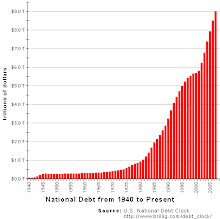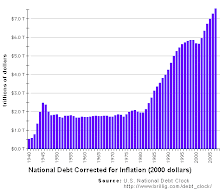Here We Go Again: Bush Exaggerates Tax Cuts
February 20, 2004
The President can't keep his figures straight. And most people are getting less than he implies.
Summary
President Bush stumbled Feb. 19, saying the average tax cut is $1,089. The White House corrected that figure to $1,586. But the fact is that most Americans won't see anywhere near either of those amounts.
As we've said before when disputing equally misleading lowball figures given by Howard Dean, half of all individuals and families will get less than $470, and half will get more. The “average” is misleading because it is inflated by very large cuts given to a relative few at the top.
Analysis
Now that the general election campaign is nearing, President Bush has resumed a sales pitch for the tax cuts he's signed. But he persists in making some misleading claims.
At a 24-minute appearance in the White House complex on Feb. 19, the President wrongly stated that "everybody who pays taxes" is getting a cut, which is not true:
Bush: We cut the taxes on everybody who pays taxes. I don't think it makes sense for tax-cutters to say, okay, you win, and you lose. My attitude was, if you pay taxes, you ought to get relief. And we cut all taxes,
In fact, all taxes were not cut and millions who pay only federal payroll taxes got no benefit from Bush's cuts.
It is true that everybody who paid federal income taxes is getting a cut. But according to the nonpartisan Tax Policy Center, 35.6 million individuals and families got zero benefit from the Bush cuts because their income was so low they were not paying federal income taxes before the cuts. This number includes 15.1 million workers who are paying federal payroll taxes for Social Security and Medicare. That's 15 million "taxpayers" who were left out.
The President also bobbled the numbers when describing the average size of the cut. Here's the official White House transcript of what he said, which was wrong, along with the footnotes inserted later by the White House staff to correct the record:
Bush: The tax relief we passed, 11 million* taxpayers this year will save $1,086* off their taxes. . . .
(* 111 million taxpayers will save, on average, $1,586 off their taxes.)
The $1,586 figure is indeed an accurate statement of the average cut received by those who are getting a cut, according to the Treasury Department. However, it is far from typical.
For one thing, the figure does not take into account the 25% of all individuals and families who are receiving zero tax cut this year. It is an average only of those who are getting some cut. When those who get nothing are added in the average cut drops to $1,217, according to the Tax Policy Center.
But most importantly, the average is inflated by the fact that most of the money is going to a relatively few taxpayers at the top of the income scale, as seen from the following table distilled from a more extensive analysis by the Tax Policy Center:
Combined Effect of Bush Tax Cuts 2003
Income
(in thousands) Percent of Households Average Tax Change
Less than 10 23.7 -$8
10-20 16.6 -$307
20-30 13.3 -$638
30-40 9.7 -$825
40-50 7.6 -$1,012
50-75 13.0 -$1,403
75-100 6.8 -$2,543
100-200 6.6 -$3,710
200-500 1.6 -$7,173
500-1,000 0.3 -$22,485
More than 1,000 0.1 -$112,925
Source: Tax Policy Center table T03-0123
Taxpayers making more than $1 million a year get an average cut of nearly $113,000 this year. Such huge cuts at the top tend to pull up the numerical average that the President is fond of citing.
A more meaningful number is the median -- or mid-point. The Tax Policy Center calculates the median cut received for income earned in 2003 is $470.
That means half of all individuals and families get less than that, and half get more.
Even the median figure doesn't give a full picture of how the benefits are spread around, however. Taxpayers make out very differently depending on whether they are married or single, and how many children they have under age 17.
That's because much of the tax relief for 2003 comes in the form of a tax break for married couples -- reduction of the so-called "marriage penalty" -- and a doubling of the tax credit granted for each child under 17, to $1,000 per child. Those do nothing to benefit single taxpayers -- including unmarried workers and millions of elderly widows and widowers, for example. In fact, the Tax Policy Center calculates that nearly 13 million of those over age 65 will get no tax cut.
On the other hand, the Bush cuts do reduce income taxes for many middle-income families to zero this year -- taking them off the federal income tax rolls entirely.
The following table, also from the Tax Policy Center, shows how different types of families in various income ranges make out under the Bush cuts this year:
Combined Effect of Bush Cuts for 2003: Typical Families
(Amounts by which federal income taxes would rise if cuts are repealed)
Income
Single
Married Filing Joint
# of kids under 17–>
0
0
1
2
3
$10,000
$110
$76
$0
$0
$0
$15,000
350
142
610
661
661
$25,000
350
702
1,210
1,661
1,579
$35,000
350
932
1,433
1,897
2,245
$50,000
669
773
1,272
1,773
2,271
$75,000
1,318
1,714
1,817
1,938
2,437
$100,000
2,001
2,596
3,004
3,413
4,510
$125,000
2,695
3,277
3,435
4,094
4,571
$150,000
3,460
4,010
3,918
3,827
4,735
$200,000
5,218
5,623
5,531
4,918
4,364
$500,000
15,585
12,328
12,328
12,328
12,328
$1,000,000
37,713
38,426
38,426
38,426
38,426
Source: Tax Policy Center Table T03-0200
The President is not the only politician who distorts the figures regarding the tax cuts, of course. As we've pointed out before, Howard Dean persisted in a false claim that "sixty percent of us got only $304," when in fact most taxpayers got more.
And some of the points in the President's election-year sales pitch are perfectly valid. For example:
Bush: Nearly 5 million taxpayers will be off the rolls as a result of the tax relief this year.
That's true for federal income taxes -- close to 5 million who previously owed some federal income tax will owe none under the Bush cuts, including many middle-income families with children.
We'll no doubt be hearing more about the tax cuts in the months to come. Both Kerry and Edwards, currently slugging it out for the Democratic nomination, have called for repeal of portions of the Bush cuts that benefit upper-income taxpayers.
Sources
George W. Bush " Remarks by the President on the Economy" Presidential Hall, Eisenhower Executive Office Building 19 Feb. 2004.
Elisabeth Bumiller, “Bush Promotes His Tax Cuts as Beneficiaries Stand By” New York Times 20 Feb. 2004.
Table T03-0123 "Combined Effect of EGTRRA and Conference Agreement on the Jobs and Growth Tax Relief Reconciliation Act of 2003: Distribution of Income Tax Change by AGI Class, 2003" Tax Policy Center Washington DC 23 May 2003.
Table T03-0163 "Combined Effect of EGTRRA and JGTRRA: Number of Tax Units by Size of Income Tax Cut and Individual Characteristics, 2003" Tax Policy Center Washington DC 23 June 2003.
Table T03-0200 "The 2001 and 2003 Tax Cuts for Representative Families By Type of Filer for Tax Year 2003" Tax Policy Center Washington DC 2 Jan 2004.
Friday, February 20, 2004
The Primary Beneficiaries of the Bush Tax Cuts are the Wealthy
FactCheck.org straightens out some of the distortions in discussions about the beneficiaries of the 2003 Bush tax cuts:
Subscribe to:
Posts (Atom)





